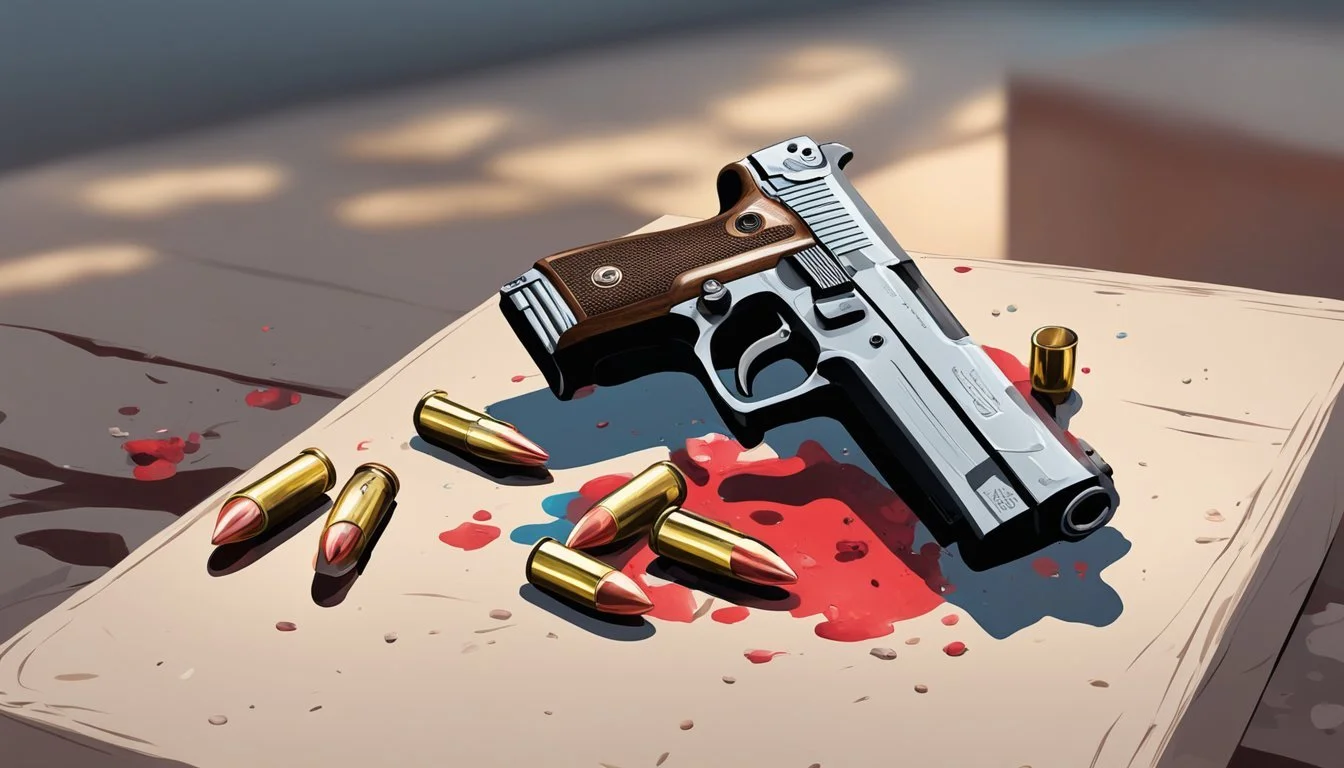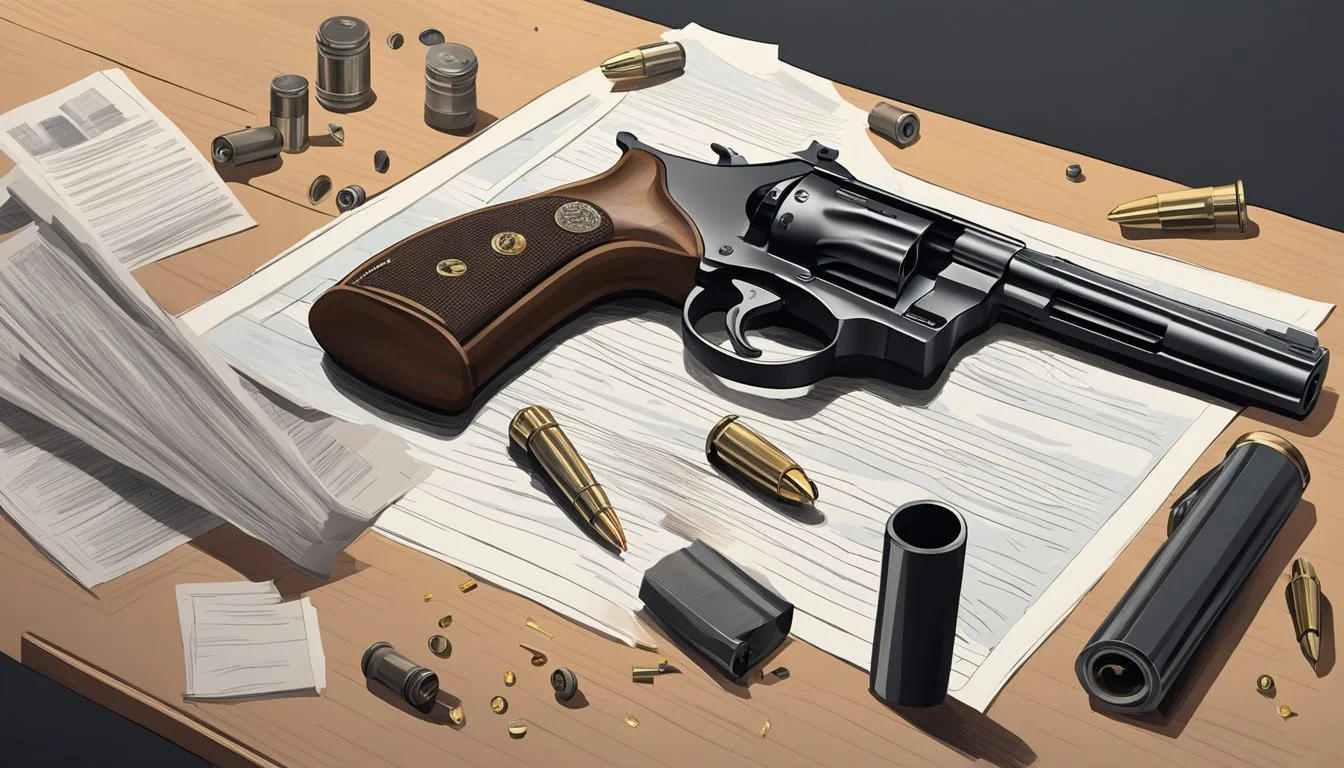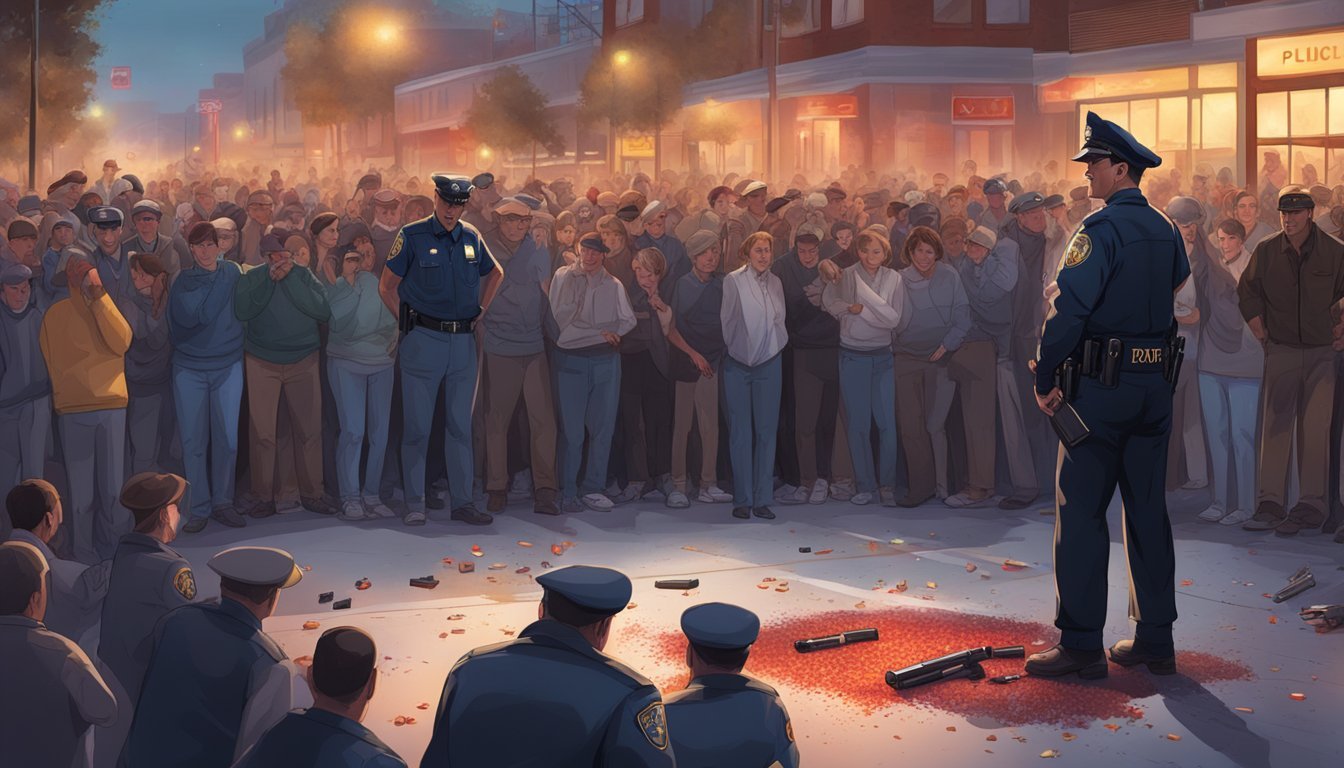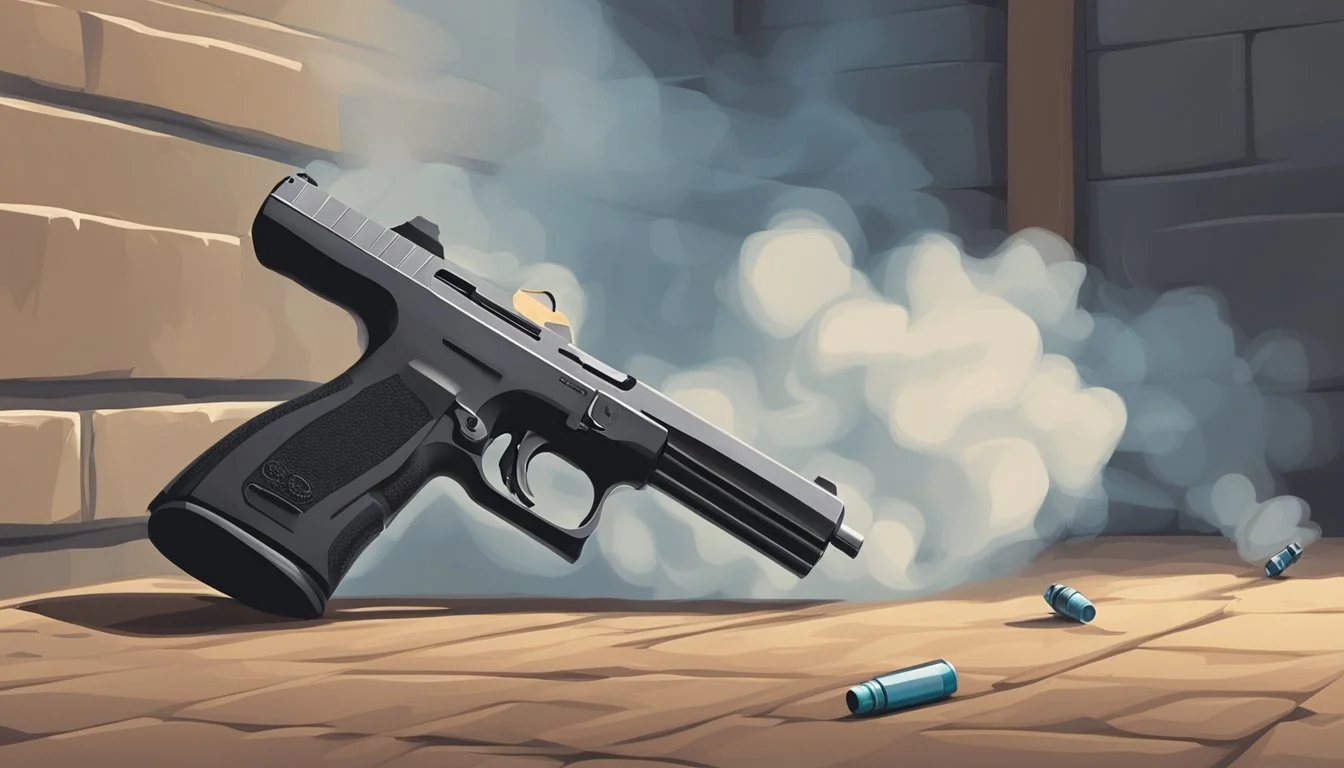Joseph Christopher's Final Shot: .22 Caliber Killer Ends His Own Life
Joseph Christopher, known as the .22-Caliber Killer, gained notoriety for his racially motivated murders in Buffalo, New York in 1980. His killing spree began on September 22, when he shot and killed three black men and a 14-year-old boy within 36 hours using a .22 caliber sawed-off Ruger 10/22 semi-automatic rifle.
Christopher's actions terrorized the Buffalo area and sparked a manhunt that ultimately led to his capture. The serial killer's victims included Glenn Dunn, the teenage boy shot outside a supermarket, and Harold Green, a 32-year-old man killed while dining at a restaurant. Christopher's choice of weapon and targeting of African American victims earned him the chilling moniker that would follow him into infamy.
The .22-Caliber Killer's reign of terror came to an end with his arrest, but the impact of his crimes lingered in the community. Christopher's case brought attention to issues of racial violence and mental health, as investigators delved into the motivations behind his deadly actions.
Profile of Joseph Christopher
Joseph Christopher, known as the ".22-Caliber Killer," terrorized Buffalo and New York City in the early 1980s. His troubled background and mental health issues played a significant role in his criminal behavior.
Early Life and Background
Joseph Christopher was born in Buffalo, New York, in 1955. He grew up in a working-class family and attended local schools. Christopher's childhood was marked by social awkwardness and difficulty forming relationships.
As a young adult, he enlisted in the U.S. Army but struggled to adapt to military life. His service was short-lived, and he was discharged after a brief stint. This failure further exacerbated his feelings of isolation and inadequacy.
Mental Health and Criminal Behavior
Christopher's mental health deteriorated significantly in his early twenties. He was diagnosed with paranoid schizophrenia and spent time at the Buffalo Psychiatric Center. His condition was characterized by:
Severe delusions
Auditory hallucinations
Paranoid thoughts
These symptoms fueled his violent tendencies and racial hatred. In September 1980, Christopher began his killing spree, targeting African American men in Buffalo. He used a .22 caliber rifle, earning him the moniker "The .22-Caliber Killer."
Christopher's crimes expanded to New York City, where he continued his racially motivated attacks. His mental state worsened, leading to increasingly erratic behavior. Law enforcement eventually apprehended him, ending his reign of terror.
While incarcerated at Attica Correctional Facility, Christopher was diagnosed with male breast cancer. He died in prison in 1993 at the age of 37.
Timeline of Crimes
Joseph Christopher's violent spree spanned several months and locations across New York state in 1980-1981. His attacks primarily targeted Black men using a .22 caliber rifle and knives.
The Murders in Buffalo and Rochester
On September 22, 1980, Christopher killed 14-year-old Glenn Dunn outside a Buffalo supermarket. Within 36 hours, he murdered three more Black men: Harold Green, Emmanuel Thomas, and Joseph McCoy.
On October 8-9, Christopher shot and killed four Black men in Buffalo and Rochester: Parler Edwards, Ernest Jones, Collin Cole, and Wendell Barnes. He used a .22 caliber rifle in all these attacks.
These shootings sparked fear in New York communities and led to Christopher being dubbed the ".22-Caliber Killer" by the media.
Midtown Slasher Attacks in New York City
In late December 1980, Christopher traveled to Manhattan. There, he stabbed several men in subway stations and on the streets.
His victims included:
Ivan Frazier, stabbed on December 22
Luis Rodriguez, attacked on December 23
John Adams, wounded on December 24
Christopher's switch to knife attacks and change of location initially prevented police from connecting these crimes to the earlier shootings.
The Niagara Falls Incidents
After returning upstate, Christopher continued his attacks in Niagara Falls. On December 30, 1980, he stabbed a man named Albert Menefee.
Just two days later, on January 1, 1981, he attacked Roger Adams and Calvin Crippen. Both men survived their wounds.
These stabbings marked the end of Christopher's known violent crimes before his arrest on January 6, 1981.
Investigation and Apprehension
Law enforcement agencies launched an intensive investigation into the .22 Caliber Killer's crimes. Their efforts focused on gathering evidence and developing a profile of the suspect, ultimately leading to Joseph Christopher's capture and arrest.
Evidence Gathering and Profiling
The Buffalo Police Department collected forensic evidence from crime scenes, including bullet casings and witness statements. They analyzed patterns in the killer's methods and victim selection. Ballistics experts confirmed the same .22 caliber weapon was used in multiple shootings.
Investigators developed a profile of the suspect as a white male in his early 20s with racial motivations. They theorized he likely lived or worked in the Buffalo area based on the locations of the attacks. The Erie County District Attorney's office coordinated with federal authorities as the investigation expanded beyond city limits.
Capture and Arrest
On January 6, 1981, military police at Fort Benning, Georgia detained Joseph Christopher after finding a .22 caliber rifle in his possession. Buffalo detectives traveled to Georgia to question him about the murders.
Christopher confessed to several of the shootings during interrogation. Police matched his rifle to ballistics evidence from the crime scenes. He was arrested and extradited back to New York to face charges.
The Erie County District Attorney's office built a case against Christopher, compiling physical evidence and testimony. He was indicted on multiple counts of second-degree murder.
Legal Proceedings and Conviction
Joseph Christopher faced a complex legal process following his arrest for the .22 caliber killings. His trial and defense centered on questions of mental competence, while the prosecution sought severe punishment for his crimes.
Trial and Defense
Christopher's defense team argued he was mentally unfit to stand trial. Psychiatric evaluations revealed severe mental illness, including paranoid schizophrenia. The court initially found him incompetent, delaying proceedings. After treatment, he was deemed fit to face charges.
His lawyers pursued an insanity defense, presenting evidence of Christopher's delusional beliefs and erratic behavior. They argued he couldn't distinguish right from wrong during the killings. Prosecutors countered that Christopher's methodical planning showed awareness of his actions.
Conviction and Sentencing
Despite the insanity plea, the jury found Christopher guilty of first-degree murder. The evidence of premeditation and racial targeting proved convincing. In 1982, he received a sentence of 60 years to life in prison.
The judge cited the brutality of the crimes and the need to protect society in delivering the maximum sentence. Christopher's convictions included three murders in Buffalo and one in Niagara Falls. He faced additional charges in other jurisdictions for related crimes.
Law enforcement officials expressed relief at the conviction, viewing it as closure for a case that had terrified communities. The sentencing effectively ensured Christopher would spend the rest of his life behind bars.
Public Reaction and Impact on Communities
Joseph Christopher's killing spree sent shockwaves through New York communities. The murders heightened racial tensions and left lasting scars on victims' families.
Impact on Victims' Families
The families of Glenn Dunn, Harold Green, Emmanuel Thomas, and Joseph McCoy faced unimaginable grief. Their loved ones were senselessly taken, leaving a void that could never be filled.
Many families struggled with anger and fear in the aftermath. Some sought counseling to cope with their loss.
The victims' relatives became vocal advocates against racial violence. They participated in community rallies and spoke out about the need for racial healing.
Effects on Racial Dynamics in New York
Christopher's racially-motivated killings stoked fears in Buffalo's Black community. Many Black residents felt unsafe venturing out alone, especially at night.
Local leaders called for increased police protection in predominantly Black neighborhoods. Community watch groups formed to look out for suspicious activity.
Interracial dialogues emerged as people sought to bridge divides. Churches and civic organizations held forums to discuss racial tensions and promote understanding.
Some white residents expressed shame over Christopher's actions and worked to show solidarity with the Black community. However, lingering mistrust remained a challenge to overcome.
Christopher's Final Moments
Joseph Christopher, known as the .22-caliber killer, spent his last years in prison. His mental health deteriorated, leading to a tragic end.
Incarceration and Declining Health
Christopher served his sentence at Attica Correctional Facility in New York. His mental state worsened over time, exacerbated by the harsh prison environment. Guards and fellow inmates noted his increasingly erratic behavior.
Medical records showed a decline in Christopher's physical health as well. He suffered from various ailments, including depression and anxiety disorders. Prison officials placed him under closer observation due to concerns about his well-being.
Suicide and Aftermath
On March 1, 1993, Christopher took his own life in his prison cell. He was 37 years old. Guards discovered his body during a routine check.
The news of the .22-caliber killer's suicide spread quickly. Victims' families expressed mixed emotions, from relief to renewed grief. Law enforcement officials closed several open cases linked to Christopher's crimes.
Christopher's death marked the end of a dark chapter in Buffalo's history. It left many questions unanswered about his motives and the full extent of his crimes.
Legacy of the .22-Caliber Killer
Joseph Christopher's crimes as the .22-Caliber Killer left a lasting impact on criminal investigations and popular culture. His case influenced law enforcement practices and sparked public fascination with serial killers.
Criminal Profiling Contributions
Christopher's modus operandi of using a sawed-off Ruger 10/22 rifle to target Black men helped refine criminal profiling techniques. Law enforcement agencies studied his case to improve their understanding of racially motivated serial killers.
The .22-Caliber Killer's actions led to enhanced training for detectives in recognizing patterns in seemingly random murders. This case highlighted the importance of considering racial bias as a potential motive in serial killings.
Christopher's use of a concealed weapon in public spaces prompted reassessment of security measures in urban areas. His crimes also contributed to discussions about gun control, particularly regarding modified firearms like sawed-off rifles.
Media Portrayal and Cultural Impact
The .22-Caliber Killer case received extensive media coverage, fueling public interest in serial killers. Christopher's crimes inspired true crime books, documentaries, and fictionalized accounts in popular media.
His targeting of Black victims sparked conversations about racial tensions and violence in American society. The case became a symbol of racially motivated hate crimes, influencing discussions on prejudice and discrimination.
Christopher's nickname, the ".22-Caliber Killer," entered the public lexicon, joining other infamous monikers in criminal history. His crimes continue to be referenced in criminology courses and true crime communities, serving as a cautionary tale of unchecked hatred and violence.
References and Further Reading
For those interested in learning more about Joseph Christopher and the .22 Caliber Killer case, the following resources offer additional information:
Pelonero, Catherine. Absolute Madness: A True Story of a Serial Killer, Race, and a City Divided. Skyhorse Publishing, 2017.
Keppel, Robert D. and William J. Birnes. The Psychology of Serial Killer Investigations: The Grisly Business Unit. Academic Press, 2003.
Newton, Michael. The Encyclopedia of Serial Killers. Facts on File, 2006.
Online articles and news reports provide contemporary accounts of the crimes:
"The .22-Caliber Killer: Buffalo's Forgotten Reign of Terror" - The Buffalo News
"Remembering the .22-Caliber Killer: 40 Years Later" - WGRZ.com
For academic perspectives on racial motivations in serial killings:
Fox, James Alan and Jack Levin. Extreme Killing: Understanding Serial and Mass Murder. SAGE Publications, 2014.
These sources may use cookies or display ads. Readers should consult primary sources and official records for the most accurate information on this case.








